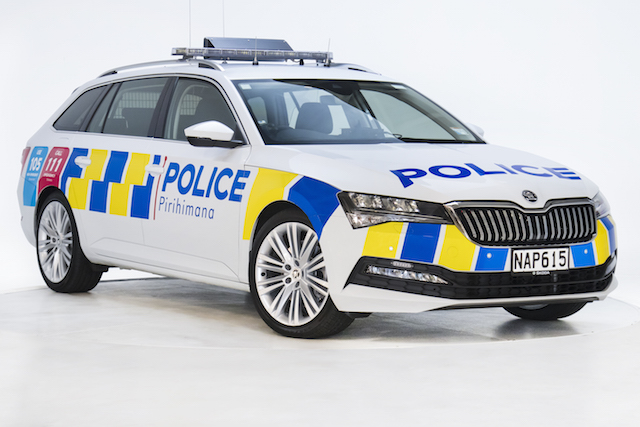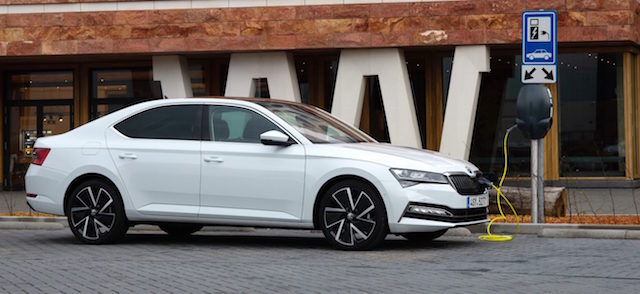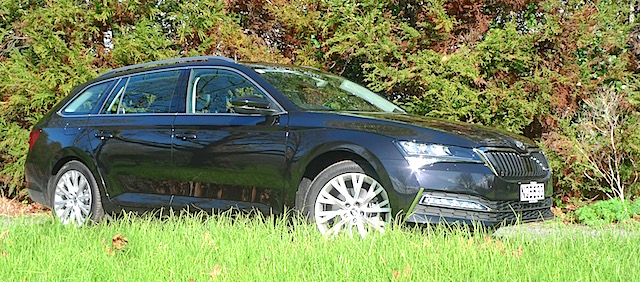
The latest Skoda Superb being trialled by the New Zealand Police will most likely end up with an office job rather than a Prime One role in the front line.
Not because it’s a tenderfoot, more that the Superb iV is a plug-in hybrid electric vehicle (PHEV) that – like all PHEVs – does what it does best pootling around city and suburban streets.
That’s the beat where the petrol engine, electric motor and lithium-ion battery pack work in hybrid mode to deliver tailpipe CO2 emission numbers that make good reading in a world moving to rid itself of polluting exhausts.
Skoda claims the front-drive Superb iV emits CO2 emissions of 40 grams/kilometre in combined, or optimum petrol-electric, mode. That’s fuel use of 1.7 litres/100km, or 167mpg. Overall range from the 50-litre fuel tank, it says, is 930km. Fully charged, the car can go all-electric for up to 62km.
Police fleet manager Brian Yanko admits he isn’t sure what duties the PHEV Superb iV will be assigned to when it joins the 70-odd other Skodas in the thin blue line; he and his team have just begun putting it through its paces.
The collaboration with Skoda since last year is all about lowering the police fleet’s carbon emissions. “Not only is this New Zealand Police’s accountability to Government requirements and expectations, it’s also our social responsibility,” Yanko said.
Of course, governments often to fail to grasp that focusing on one issue at a time, such as CO2 (carbon dioxide) output, inevitably leads them to ignore others, such as toxic NOx emissions from diesels. The mayor of London, Sadiq Khan, said as much in promoting green transport initiatives in the city.
In the past 800,000 years, the US Environmental Protection Agency (EPA) notes, the concentration of CO2 in the atmosphere oscillated between roughly 180 and 280 parts per million — until the beginning of the Industrial Revolution.
Over the past 250 years, a blink of an eye in the history of the planet, the CO2 concentration leapt to 411 parts per million in 2019. “The longer we humans fail to adjust our behavior, the worse the (global warming) consequences are likely to be,” says the EPA.
The powertrain in the Superb iV (i for ‘intelligent’, V for vehicle) comprises a turbocharged 115kW/250Nm 1.4-litre four-cylinder engine from Skoda parent Volkswagen mated to a six-speed double-clutch (DSG) transmission with energy-recuperative drive modes. An 85kW/330Nm electric motor powered by a 13kWh battery mounted low down in front of the rear axle completes the PHEV assembly.
Lump power and torque figures together and the resulting output is a mathematically curious 160kW/400Nm. That’s how it is with petrol-electric power. There isn’t a standardised way of measuring the combined output of a hybrid powertrain because there’s never a time when the petrol engine and the electric motor are working together all at once to deliver peak power.
The New Zealand police fleet comprises around 3500 vehicles, says Yanko. Of those, 2200 are frontline models, or first responders. Among them are 70-odd Skodas, mostly front- and all-wheel-drive Superbs, each running a boosted 2.0-litre four-cylinder from Skoda parent Volkswagen.
The engine in the front-drive models is the 162kW Golf GTi unit; the all-wheel-drive Superbs get the 206kW Golf R version. The power difference is only on paper – both VW powertains are plenty fast. “The importance of a frontline vehicle is to get to its destination quickly,” says Yanko.
Pretty much the only visual difference between the Superbs on the police fleet and the PHEV model that has joined it is the iV badge at the rear. Look closer up front and there’s a charge port hidden in the grille. Inside of course the central display shows dedicated PHEV information.
The differences likely to decide where the iV will fit in the police fleet include its smaller boot, down around 150 litres to help make room for the battery pack. There’s also no spare wheel. Much of where it would have gone under the boot floor is taken up by charging cables. The 50-litre fuel tank is smaller too, by 5 litres.
Charge times will also figure in the final finding: seven hours plugged into a household socket, three-and-a-half hours into a public fast charge site. On civvy street, the time differences might not amount to much, not when a survey says 68 per cent of the Skoda faithful want battery-electric or plug-in hybrid power.
Those loyalists can rest easy with the Superb iV because, when the car’s on the move, the petrol engine can either charge the battery or maintain the remaining battery level for all-electric use at a later stage. The central display shows energy recuperation.
Drive in all-electric alone for a prolonged period and pressure builds in the petrol tank. It must be released, Skoda reminds us, before opening the fuel cap. This ‘venting’ process is done via a button on the DSG selector.
The Superb iV is priced between $71,990 and $79,990.
When Rodney met Possum: what it means for the new Skoda Scala
Skoda Karoq SUV offers more than the bear necessities


